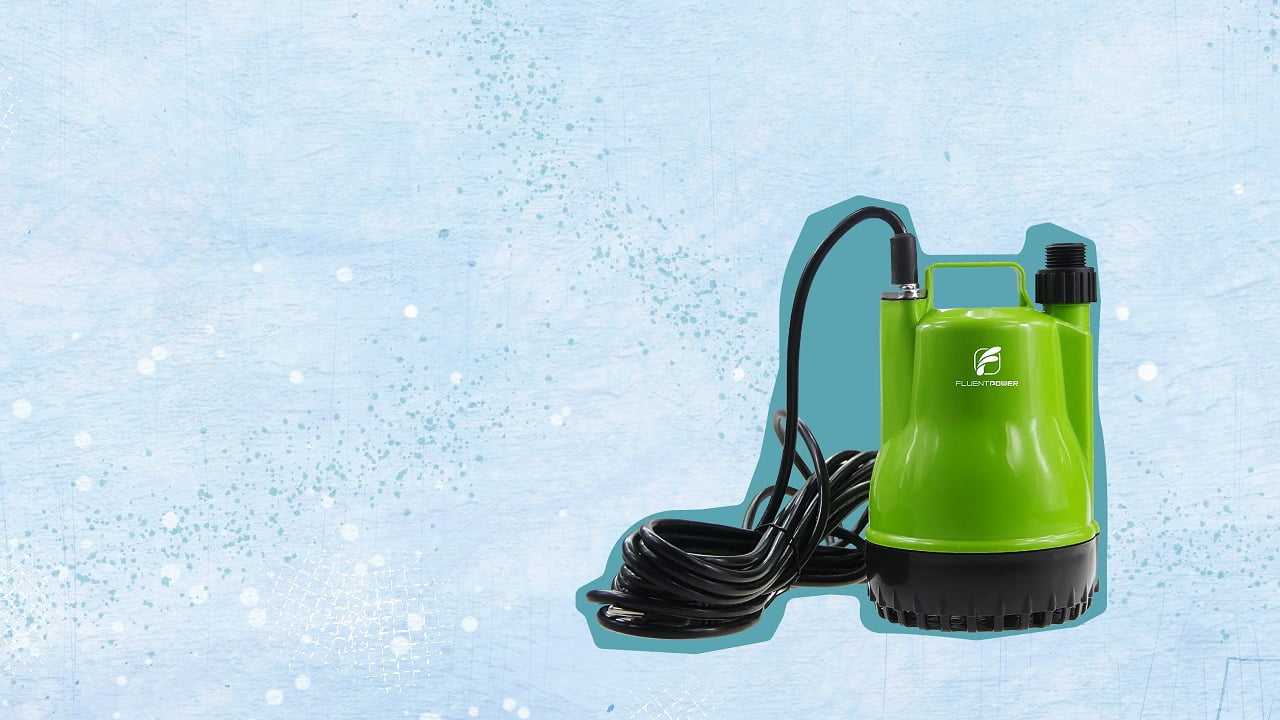What Is A Utility Pump | All You Need To Know
A utility pump is used to pull water from one location to another. Additionally, it is versatile enough to be used for a variety of applications, including draining pools, construction sites, ponds, and hot tubs. Be it transferring water from one place to another or draining water pools – utility pumps can come to your […]

A utility pump is used to pull water from one location to another. Additionally, it is versatile enough to be used for a variety of applications, including draining pools, construction sites, ponds, and hot tubs.
Be it transferring water from one place to another or draining water pools – utility pumps can come to your rescue.
You can use them for moving water from basements and crawl spaces; and transferring water between tanks. In this blog post, you will discover why you need utility pumps, how to select the best utility pumps, and what the difference is between utility pumps vs. sump pumps.
Why Do We Need Utility Pumps?

Utility pumps are versatile tools that can be used in different ways. Whether it is a pond, a pool, a blocked sink, or any other enclosed place, a utility pump can come in handy.
Water pressure can be increased with the use of utility pumps, and water can be transported at a greater pressure than with merely gravity feed. This is especially true if a utility pump is connected to a rain collection system or water storage cistern.
In many cases, the groundwater around a home is not a problem. However, if the water table is high or there is poor drainage, water can accumulate in places like stairwells or window wells. This can lead to several problems, including mold growth and foundation damage. A utility submersible pump can be used to remove water from these areas, and you should also know some pumps are designed for depths of several feet.
How To Choose The Right Utility Pump For Your Needs
Are you having drainage issues on your property and looking for the best utility pump to solve the problem?
Choosing the right utility pump can be daunting, but we are here to help. There are many factors to consider when choosing a utility pump, including the type of water you’re dealing with, the size of your property, the motor selection, and your budget.
A submersible utility pump is a good option if you are dealing with clean water. Submersible pumps are designed to be submerged in water and are ideal for draining swimming pools, ponds, or other small bodies of water.
The size of your property is also an important consideration. You may need more than one pump if you have a large property with extensive drainage issues. Conversely, if you have a small property with minimal drainage problems, a less powerful pump may suffice.
Finally, consider your budget when choosing a utility pump. Choose the best pump for your needs and budget to ensure that your drainage problems are solved once and for all.
Tip
If you’re dealing with dirty or sewage water, you’ll need a sewage or trash pump. These pumps are designed to handle solids and other debris, and they are ideal for removing water from basements or other flooded areas.
Sump Pump Vs Utility Pump
Basically, a sump pump is placed in a pit or sump at the lowest point of your house. There is a float switch in the sump to prevent flooding. The sump pumps are triggered whenever there is excessive water in the sump. Utility pumps remove standing water from low spots and fill ponds.
Moving on, you should know that a sump pump is one type of submersible utility pump. In order to pump water and stop it from destroying the framework, flooring, and furniture, builders set up sump pits and drains. Water enters the sump via the subfloor drains and is immediately pumped through the sump pump and into the sewage system.
Characteristics Of A Sump Pump
While discussing a sump pump vs a utility pump, I should tell you about the major characteristics of a sump pump.
1. Installation
As a rule, sump pumps are installed vertically, with the intake hole situated as close to the ground as practicable. This ensures that the pump can draw large amounts of water from the sump. The water in a sump pit can be lowered to within an eighth of an inch with the help of sump pumps.
2. Standard Switch
The float switch is a standard component of sump pumps. As the water level rises, the float switch will move upwards and activate the sump pump. The switch will remain on until the water level of the sump pit has dropped to an acceptable level. In more advanced models, this is handled automatically by an inbuilt sensor.
3. Output Connector
Most sump pumps include a one-inch or larger diameter output connector that is threaded for simple connection to the tubes that lead to the sewage system. Some models of sump pumps have an adapter that lets you use it to drain water from pools and ponds by connecting it to a garden hose.
4. Lift
The lift of the sump pump should be high enough to send the water several feet upwards to the drain. Since a traditional utility pump can only raise water a few feet, this is crucial.
Which One To Pick?
Sump pumps are typically used to get rid of standing water from the sump basin, which one can find in the basement of their property. The water is pumped out of the home and away from the foundation to avoid flooding.
Utility pumps, on the other hand, are versatile tools that can be used for a variety of tasks around the home. You can drain pools and spas, remove water from ponds and aquariums, empty clogged sinks, and even irrigate garden hoses.
There are several ways to power a utility pump. Direct and alternating currents are the two main types of electricity, and utility pumps can be powered by either type. Gasoline-powered utility pumps are also available, and these are typically used for outdoor applications.
Hydraulic utility pumps are powered by fluid pressure, and these are often used in industrial settings. When choosing a utility pump, it is important to consider the application and select a pump that will be able to meet the specific needs of the job.
Which Switch Type Should You Select?
Submersible pumps often have a switch that activates the pump whenever the level of water in the sump pit reaches a specific level. There are three typical types of submersible utility pump switches.
1. Float Switches
The majority of submersible utility pumps include a float switch. Typically, the float is linked to the pump’s housing by a pivoting arm. As the water level of the sump pit increases, the float will rise and start the pump.
At the predetermined level, the swing arm deactivates the pump as the water level decreases. The swing arm deactivates the pump at the predetermined level as the water level decreases.
2. Diaphragm Switches
Some submersible utility pumps are equipped with an internal diaphragm switch. The pump is turned on because of the increased air pressure that pushes on the diaphragm when the water content in the sump pit rises. As the level of water falls, the air pressure reduces, and the switch opens, shutting off the pump.
3. Mercury Switches
Mercury switches utilize a small amount of mercury contained within a glass vial to function. At the vial’s end are two wires. The pump functions when mercury is in connection with the wires.
Typically, the mercury switch is encased in a float ball located at the end of a brief electrical connection. When the water increases, the float ball rises, and mercury within the switch finishes the circuit to activate the pump.
These switch systems are all dependable. However, as with any mechanical device, all three switches are susceptible to failure. Routine inspection, testing, and maintenance are required to maintain the dependability of your sump pump.

Final Words On What Is A Utility Pump
A utility pump is an important piece of equipment for many homes and businesses. By understanding the different types of pumps available, you can select the right one for your needs. Keep in mind the centrifugal force, flow rate, power source, and inlet size of the pumps while choosing an option.
Also, if you want to know more about these water pumps, read our blog on “Who makes Utilitech pumps?” We hope this guide has helped make the process a little easier.
Until next time!
